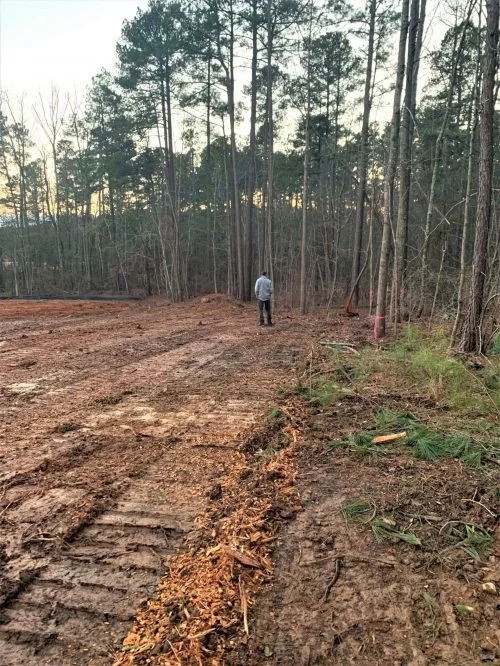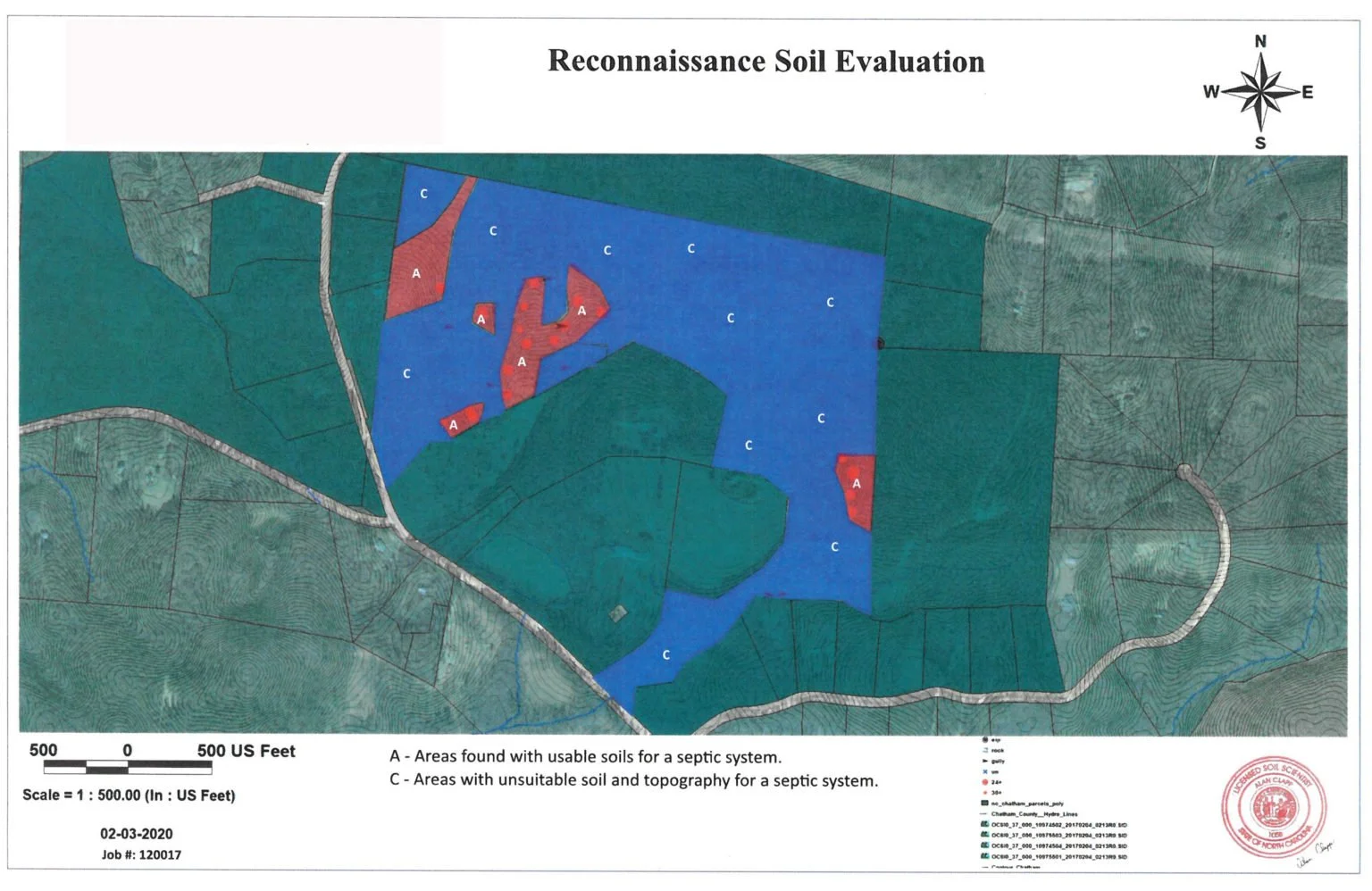Top 6 (ish) Considerations for a Land Purchase in the Triangle
Inventory levels of existing homes in the Triangle region of North Carolina have been low for over five years now. Prices continue to rise and new home construction has been slow to catch up to demand. The National Association of REALTORS Chief Economist Lawrence Yun says, “2021 is likely to have the most acute shortage of homes for sale in history.” In addition to national trends, the Triangle has gained more momentum as larger companies decide that the area is a great opportunity for satellite offices or new regional headquarters.
The increase in national attention, from people and corporations alike, combined with the current pandemic has created a climate that is ultra-competitive and frustrating. This has encouraged some would-be buyers to look to other options in the area, one being buying raw land with the intention of building. We often receive calls and emails from folks who started the land purchase process before realizing what is involved in the evaluation and acquisition, and they reach out to us for guidance after finding themselves in a tight spot.
Every situation is different, as is each buyer and each tract of land. Finding the right real estate professional to help guide you through the journey is a good starting point. Below are a few areas to consider when deciding if buying land and building is the right path for you so you might be able to avoid potentially costly mistakes.
Clayton Nell, assessing the progress at a building site.
Purchase Plan: Loan vs. Cash
How you plan to purchase the property is very important. Cash is simple and straightforward. Loans are going to land in one of two categories: 1) Construction Loan or 2) Land Loan.
The construction loan will be more readily available from traditional lenders, and will generally require that a buyer have 20% down and a licensed general contractor/architect/builder approved or vetted by the underwriter. This type of loan covers the purchase of the tract of land and the building process of 12 to 18 months. During this build process, the payments are interest only. Once the build is complete, the loan will convert over to a conventional mortgage. It is imperative that a builder is chosen and a buyer is ready to begin the build process in order for a construction loan to be the right fit.
Raw land loans are the other option for financing. These loans are not available from every lender, so doing a little research ahead of time will be important. These loans typically require 25% down, have terms of 15 years, and interest rates that are a little higher than conventional mortgages for existing homes. The benefit of this route is that there is no timeline to build. One good lending institution in the Triangle area for land loans is Carolina Farm Credit.
Soil Suitability
If the goal of acquiring a tract of land is to build a home, you need to know what the soil suitability is in order to figure out what type and size septic system will work and where it will be located on the property. As a preliminary step, checking the county soil survey and GIS (Geographic Information System) maps will give a ballpark idea of what you are getting into. The next step would be to engage an independent soil scientist to evaluate the entire property and give their professional opinion as to what type of systems the soil will accommodate and where they should go. This will allow you to determine if the size and location of the system will work with your building plans and ideas.
Independent soil scientists are busy folks. Recently we have heard of a two to three-week wait for them to come out and visit a property. From there it will take approximately another week to get the report together and back our way. Given the importance of this information in evaluating a tract of land for your intended use, the appropriate time is important to factor in when working out due diligence timelines in initial negotiations.
Once you have a soil evaluation in hand you are one large step closer to applying for a septic permit from the county environmental health department. This is a step that can wait until after closing while you work on the details of the build project.
Soil evaluation maps show both suitable and unsuitable soils for septic systems.Soil evaluation maps show both suitable and unsuitable soils for septic systems.
Additional Costs
Depending on the characteristics of the property itself, there will be additional costs to consider with regard to maintaining the property and/or building, including:
Determining soil suitability for a septic system
Septic system permitting and installation
Obtaining a professional land survey
Clearing and grading the land
Digging and obtaining a permit for a well
Cutting or constructing a driveway or access
Installing utilities
Costs to build are variable and will depend on the style, size, and quality of the home design
It is worth considering a whole-house generator in order to operate the well and septic system components in case of a power outage
Natural barriers could increase the cost of building or accessing the building site, such as creeks or other sensitive environments, as well as steep topography
Site Limitations
The orientation and topography of a tract of land could influence the positions, orientation, and costs associated with the build process. This is something to pay attention to when evaluating a property online and/or in person.
Topographical maps show the elevations of both natural and man made features.
ROI (Return on Investment)
Land is a finite resource and demand has been steadily increasing, making it a solid investment. The return on this investment can vary depending on the area, condition, configuration, and plan for improvement. Be sure to consult with a real estate professional about your plans and ideas for the property to be sure they are in line with current market trends and movements. This will hopefully set the stage for a positive return on your investment.
Zoning vs. Intended Use
Zoning is an important factor that will determine the possible uses for a particular property. Keeping in mind what you are hoping to do with your land (agricultural uses, residential uses, how many structures) will be important to know ahead of time. County planning and zoning regulations change periodically, but current information can always be found in the planning department sections of the county you are searching in. The last thing you want to do is purchase a piece of land only to discover you can’t build the barn, art studio, or accessory dwelling you’ve been dreaming of due to something like impervious surface or watershed restrictions.
If you are planning to purchase land with an agricultural use in mind, it will be important to know what the requirements are for each use in each county you might be purchasing land. Once you determine the requirements and pick a plan for a present use or deferred tax status, there will be an application/review/plan acceptance process with the county that will take place.
It’s important to know the intended use requirements when buying land for agricultural purposes.
Many folks are interested in purchasing land and the reasons vary- to build, to invest, to have a place to escape and enjoy nature until they figure out what’s next. The Triangle real estate market is receiving national attention like never before, so if you’re tossing around the idea of purchasing land, give us a shout. We can help navigate the process and save you time and money. We’ve got our boots and bug spray ready!!





